This is the eighth installment of Barn Raiser’s 2024 election coverage series “Charting a Path of Rural Progress,” which features interviews with rural policy experts and organizers who are members of the more than 30 organizations that gathered in Omaha, Nebraska, in 2023 to forge a rural policy platform on which candidates can run—and to which voters can hold their elected leaders accountable. The platform that grew out of that Omaha meeting, A Roadmap for Rural Progress: 2023 Rural Policy Action Report, released last October, details 27 legislative priorities for rural and small town America, based on legislation that has already been introduced in Congress.
This Organizer Has a Proven Strategy to Win Affordable Health Care for All
With Health Care for America Now!, Margarida Jorge is building a coalition with a winning record of reform


Margarida Jorge is the executive director of Health Care for America Now!, a D.C.-based coalition of around 50 national and state grassroots organizations that advocates for quality, affordable access to health care. Jorge co-founded the organization in 2008 and was the chief architect of the campaign’s 47-state field program that helped to pass the Affordable Care Act in 2010.
Jorge has spent almost 30 years organizing, including organizing labor unions in various industries such as poultry plant workers in Mississippi, private sector direct care workers in Missouri, and mental health workers and corrections officers in Illinois.
Jorge says her experience organizing for Medicaid at the turn of the 20th century helped shape and foreshadow her turn to national health care policy and advocacy.
When Republican Matt Blunt, the son of the conservative U.S. Senator Roy Blunt, was elected governor of Missouri in 2004, he proposed a budget replete with cuts, citing a need to balance a projected shortfall. Those cuts including the largest cut to Medicaid in the state’s history, jeopardizing the future of 350,000 low-income Missourians, says Jorge. Working with the American Federation of State, County and Municipal Employees (AFSCME), Jorge helped organize a campaign against Blunt’s proposed guts to Medicaid. By 2007, public opinion polls found a majority of Missourians saying they opposed Blunt’s handling of the state’s health care system, and Blunt declined to seek re-election.
Jorge is a first-generation immigrant from a farming and herding family with deep roots in Trás-Os-Montes, Portugal. She was among the organizers who helped craft the Rural Democracy Initiative’s Rural Policy Action Report.
How did you get involved with national health care organizing and politics?
In 2003, we suffered a stunning loss when the Bush administration and the Republican-led Congress passed Medicare Part D as part of the Medicare Modernization Act. For one thing, this did not allow the federal government to negotiate Part D drug prices with drug companies, as they do in other programs, and it has since led to skyrocketing costs for out-of-pocket spending. Every other country negotiates prices. For Medicare, the largest purchaser of prescription drugs, to be prohibited from negotiating prices was truly a stunning victory for the pharmaceutical industry.
Then, in 2005, President Bush announced in his State of the Union that he wanted to privatize Social Security. My goal at the time was to get Jo Ann Emerson, the Republican congresswoman for Missouri’s 8th congressional district, to say “no” to Bush. Bush needed to hear from a member of his own party that Republicans were not going to help him privatize Social Security. Thanks to our campaign, she became the first Republican to say, “I don’t support privatization of Social Security.” That became the beginning of the end for that issue; even with Republican majorities in both houses of Congress, it was never brought to a vote.
A couple of years later, somebody called me and asked, “Have you ever heard of this Barack Obama?” I had, of course, because I had worked in Illinois for six years, and I had worked with labor organizers. “He’s going to be the next president,” these D.C. people said. “He’s going to pass health care reform.”
I had a good long laugh at that, because I really didn’t believe any of it. But then I started to take it more seriously when I saw how many big stakeholders were involved in trying to put together a coalition to do health care reform that would take on the insurance industry.
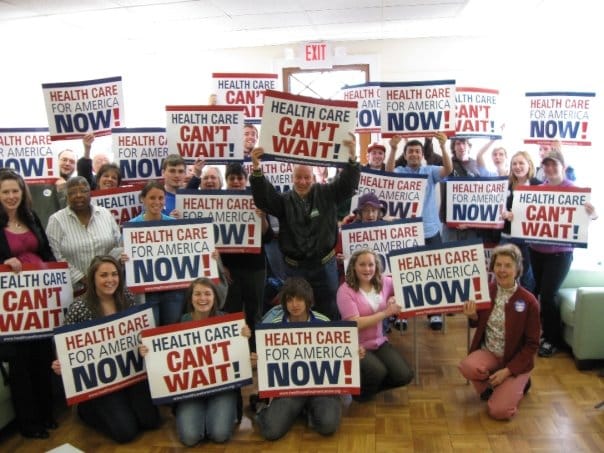
In 2007, I relocated from Missouri to Washington D.C., where I became director for the Service Employees International Union’s national health care campaign called Americans for Health Care. We knew that we couldn’t continue to function with 50 million uninsured people. Eventually SEIU joined with other major unions and community groups to form an even larger campaign: Health Care for America Now! (HCAN). Together, we helped passed the Affordable Care Act.
Why is tax policy an important part of the work you do today?
The conservative theory of the trickle-down economy—that we’re going to cut taxes for upper income people that will stimulate economic growth and prosperity for everybody else—has been well disproved. Yet, this is still their ideology around the economy. When Mike Johnson got elected House Speaker in October, he offered up a $14.3 billion Israeli aid package. How did he want to pay for that package? By rescinding almost $80 billion in funds from the Inflation Reduction Act allocated for IRS tax enforcement on people making over $400,000 a year.
Rescinding tax enforcement for wealthy households undermines the Inflation Reduction Act’s climate change provisions, which are really important particularly for rural communities. That’s because it’s the revenue generated from those taxes fund the climate change policies. Without the funding, the law can’t be implemented.
Republicans make no secret of their agenda to continue giveaways and loopholes for the super wealthy. Meanwhile, HCAN and other progressive allies are on the other side of the debate: We believe people who are super wealthy should pay taxes like the rest of us. We have a growing number of billionaires in our country. Many Billionaires pay lower tax rates than most middle class people because they don’t pay taxes on their financial assets the same way regular people pay taxes on wages from work.
Giving away more money to the rich doesn’t help the rest of us. The United States has a growing and aging population. We have huge burdens on Medicaid and Medicare. We have Social Security that really needs to be enhanced for aging people. Politicians keep crying broke, insisting we can’t afford to keep up with the costs of basic health care that people need.
That’s nonsense. Of course, we could afford health care if we fixed the broken two-tiered tax system that lets billionaires and millionaires off the hook for paying what they owe.
What kind of health care reforms are you working on now?
Our first priority is working on implementing the existing reforms passed in the Inflation Reduction Act. It was a huge bill that a lot of us have worked on for a long time, and it was really a historic bill.
One of the most important aspects of the bill is that it enables Medicare to negotiate lower prices for drugs for the first time in history. That’s going to save billions for patients and for taxpayers over the next decade.
Another popular feature is that the Inflation Reduction Act establishes what we call an inflationary cap. This penalizes drug companies who raise their prices faster than inflation, which, by the way, is practically all of them. And they’ve been doing this for years; it’s one reason why it is so hard for people to keep up with the price of prescription drugs, because the drug companies really have monopoly power to raise that price any time they want—and they do so pretty frequently.
There’s also a cap on out-of-pocket costs for Medicare Part D for the first time. In the past, seniors could be asked to pay an unlimited amount for their prescription drugs at the pharmacy. By 2025, there’s now going to be a $2,000 cap, so you can’t be asked to pay more than $2,000, which is still not great for some seniors, but will help many others. But at least it finally establishes a limit. A lot of people will benefit from the $35 insulin cap in the bill.
Assuming that we actually implement the existing law, we then work on driving demand for expansion of the existing law. That’s kind of our one-two strategy. Implement the law, show that it works and then expand it gradually so people of all ages can benefit.
Right now, that looks like expanding reforms in the Inflation Reduction Act to private insurance. More than 65% of the U.S. population has private insurance. We would like to expand these same common sense reforms for them, spreading those benefits so that everybody can have access to affordable medicines.
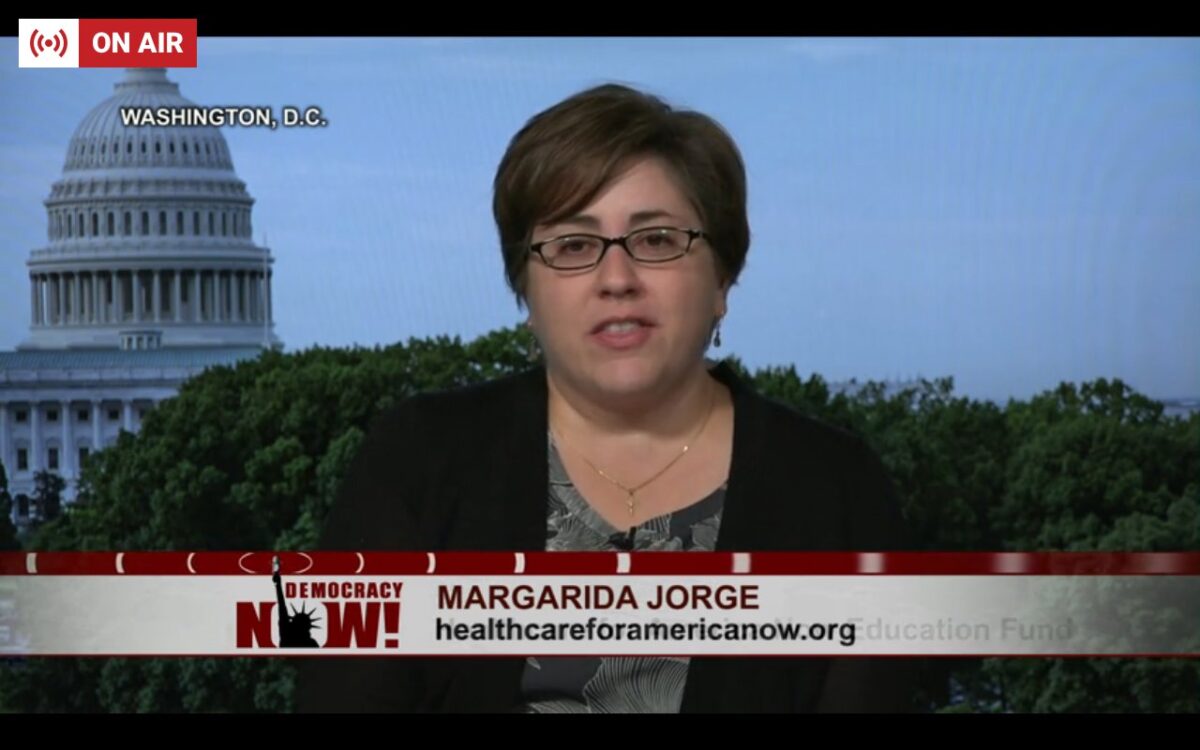
One way we would do this is through the Lower Drug Costs for Families Act. This bill essentially says, “We took a step forward with the Inflation Reduction Act, which empowers Medicare to negotiate lower prescription drug prices. We should do the same thing for people with private insurance.”
These reforms rein in an industry that has shown themselves to be completely irresponsible. They became the most profitable industry in the country. And when we think about it, that’s really remarkable. Right? The prescription drug industry became more profitable than communications and oil or than any industry in the S&P 500. And they did it because they can set their own prices and raise them whenever they want to.
Democrats are going to have to break up with Big Pharma. To be honest, the challenge has been when we had Democratic majorities in Congress, we could not get Democrats to break up with Big Pharma and regulate the industry. But we finally took on Big Pharma and won in 2022. We’re ready for more.
That same year, in June 2022, the U.S. Supreme Court handed down its decision in Dobbs v. Jackson Women’s Health Organization, which reversed nearly half a century of precedent in Roe v. Wade by taking away the constitutional right to an abortion. Reflecting on the last two years, how has the Dobbs decision reshaped organizing around health care, specifically in rural areas, and how might it shape the upcoming election?
The Dobbs decision has had a tremendous impact on health care well beyond the health of the people who may be seeking abortion services. For instance, the assault on abortion and abortion providers has driven physicians out of some states, which has had cascading impacts not just on abortion but on pre-natal and maternity care. As you might expect, the situation is especially dire in rural states where there are already shortages of providers and where people already have to travel long distances to get basic care. The state of Idaho has gotten attention for this very reason: their very restrictive abortion ban is driving pregnant patients out of state to seek care because OB-GYNs don’t want to practice there.
We know from our work with medical students that fewer students are interested in residency and practice in a state with restrictions than in a state where abortion is available and protected and where doctors can do their jobs without fear of punishment. A lot of these states are rural states. For people who are seeking abortions, abortion has gotten riskier and more expensive to access since many people have to drive much longer distances, face delays in getting the procedure and overcome financial barriers like the cost of childcare (most people having abortion already have at least one child) to get the health care they need. Denying people access to abortion has a well-documented adverse impact on people’s health and economic security and on the health outcomes for their children.
Access to safe, legal abortion is certainly going to be a big election issue in many states. The polling is clear that generally, Americans support legal, safe abortion access. Even in rural states like South Dakota, advocates have put abortion access on the ballot after the state passed a restrictive law that doesn’t even allow for exceptions for rape and incest. Many rural states—including the Dakotas and Montana, for instance—have a history of supporting reproductive freedom and access over intrusive political restrictions. So there’s reason to believe that voters will support restoring abortion rights and access in response to these bans.
From HCAN’s perspective, access to abortion is basic reproductive health care and not an issue that should be politicized but one that should be normalized as routine health care along a spectrum that includes birth control, prenatal, maternity, etc. Everyone should have the freedom to make their own health care decisions, whether it’s about abortion or about cancer treatment.
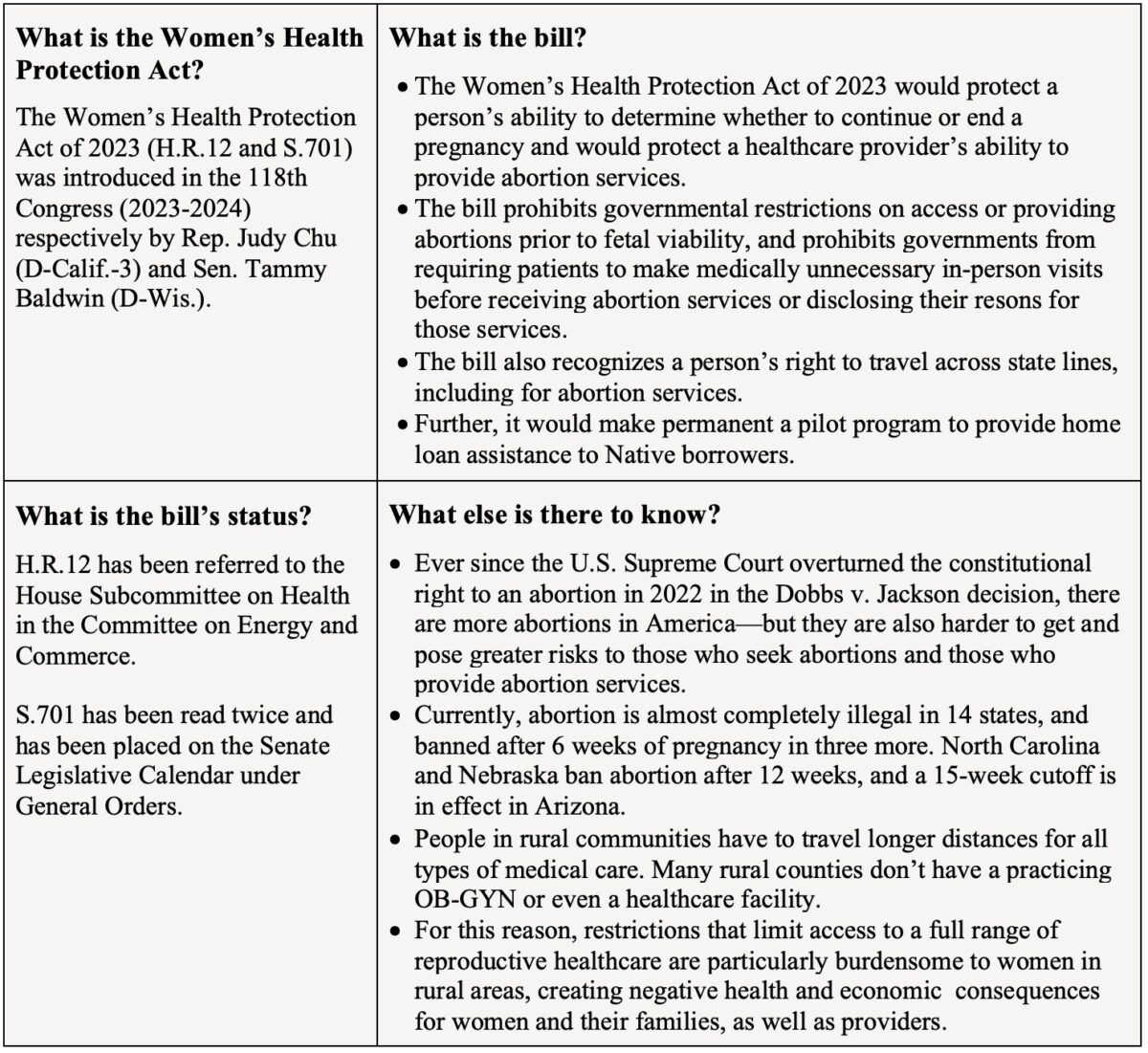
Why are health care initiatives, such as those outlined in the Rural Policy Action Report, needed?
For many years, rural America didn’t get very much attention in Washington, D.C. Democrats abandoned rural areas and decided that the future of their party was tied to people living in the suburbs and in urban areas.
The Rural Policy Action Report is a good tool for helping to remind advocates to go statewide. A lot of the issues that we work on require us to bridge the gap between rural and urban so that people see a shared stake in advancing that policy. HCAN purposely works with organizations that represent rural constituents.
Ultimately what’s going to get a lawmaker’s attention are stories and advocacy from their own constituents. That’s particularly true for health care issues, because the rural population is disproportionately older and made up of people with disabilities. When a handful of people show up with their wheelchairs and walkers and canes to voice concerns, they tend to get good attention from their elected officials. Seniors particularly have influence since they vote at much higher percentages than the rest of the population.
While health care for rural areas is not even on the menu of many D.C.-based health care advocates, it’s a top priority in many states. When I’ve traveled in rural places, in Montana, Iowa, New Hampshire, health care, particularly access and affordability, is the number one thing that people want to talk about. All roads seem to lead back to health care even when we’re talking to people about other issues: whether it’s criminal justice reform and people not able to get basic mental health services or whether it’s aging people who can’t get access or issues around abortion bans driving providers out of rural areas.
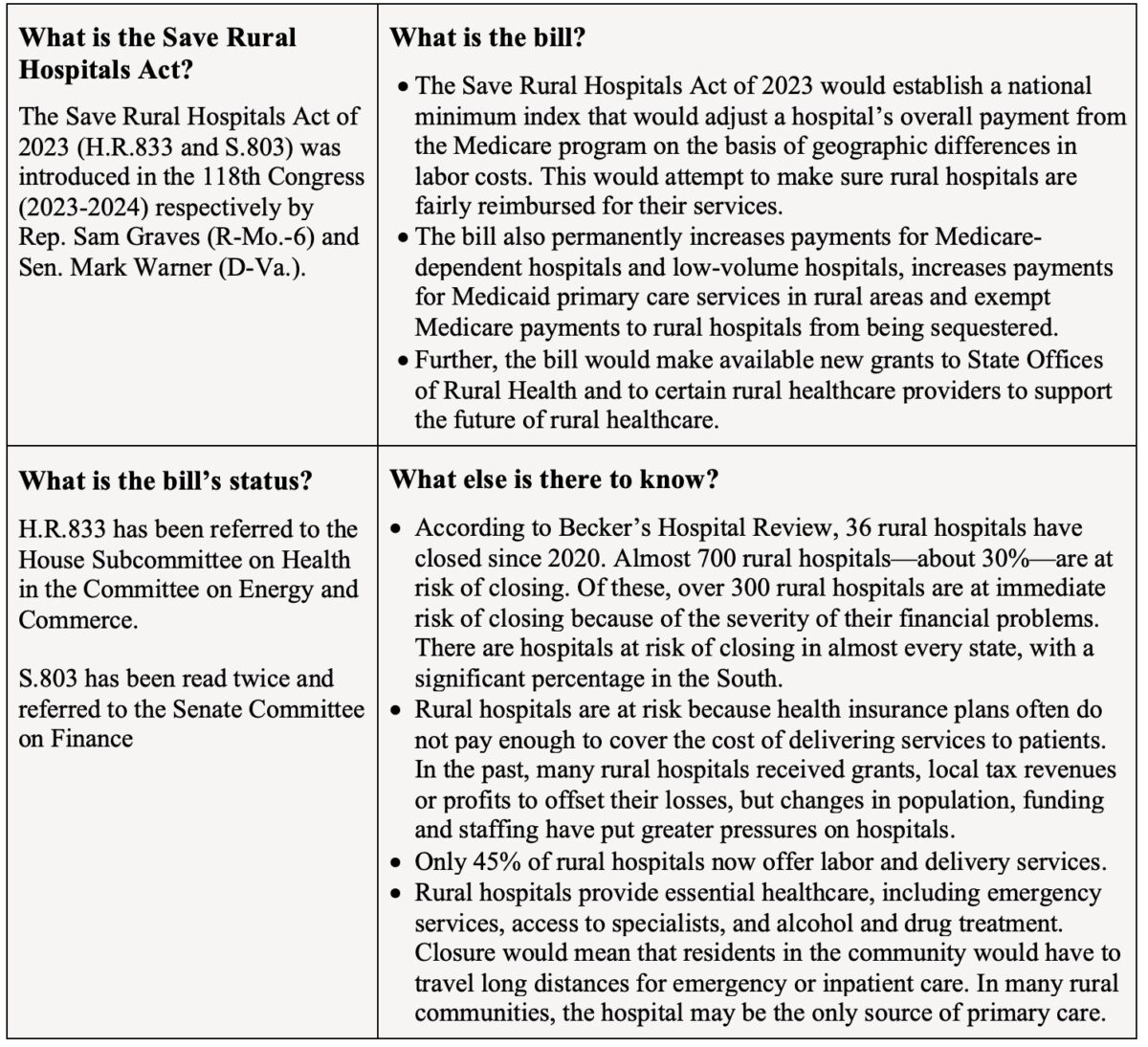
What is the importance of focusing on concrete legislation that has been introduced in Congress?
The Rural Policy Action Report gives us an opportunity to do things that are bipartisan. On issues like prescription drug prices and trade you’re able to get some bipartisan agreement because those issues disproportionately impact rural communities.
Having a bill introduced in Congress requires a lawmaker to make a choice. For example, ask any lawmaker in Congress, “Are you for taxing the rich and corporations?” They’re all going to say, “Oh my gosh. I’m for taxing the rich and corporations. Blah, blah, blah. That’s the only fair thing to do.”
They’re all for it in principle. But what actually matters is not just what they say, but what they do: we need to get a commitment to take action. The only way constituents can truly understand what a politician is willing to publicly support is if they are willing to put their name on legislation.
The details really matter when you’re writing policy—even individual words matter. When we were working on the bill that eventually became the prescription drug reform in the Inflation Reduction Act, just the change of two words from “may negotiate,” which we switched to “shall negotiate,” made a big, big difference. Because if you say that you’re for prescription drug reform, but you’re not for negotiations and you don’t want to stop drug companies from raising their rates faster than inflation, then you’re in a pretty different place than groups like HCAN and our allies. We always hone in on legislation and we use it as a tool to get a firm commitment as well as to assess the quality of the lawmaker’s commitment to take meaningful action.
Justin Perkins is Barn Raiser Deputy Editor & Publisher and Board Clerk of Barn Raising Media Inc. He received his Master of Divinity degree from the University of Chicago Divinity School. The son of a hog farmer, he grew up in Papillion, Neb., and got his start as a writer with his hometown newspaper the Papillion Times, The Daily Nebraskan, Rural America In These Times and In These Times. He has previous editorial experience at Prairie Schooner and Image.
Joel Bleifuss is Barn Raiser Editor & Publisher and Board President of Barn Raising Media Inc. He is a descendent of German and Scottish farmers who immigrated to Wisconsin and South Dakota in the 19th Century. Bleifuss was born and raised in Fulton, Mo., a town on the edge of the Ozarks. He graduated from the University of Missouri in 1978 and got his start in journalism in 1983 at his hometown daily, the Fulton Sun. Bleifuss joined the staff of In These Times magazine in October 1986, stepping down as Editor & Publisher in April 2022, to join his fellow barn raisers in getting Barn Raiser off the ground.
Have thoughts or reactions to this or any other piece that you’d like to share? Send us a note with the Letter to the Editor form.
Want to republish this story? Check out our guide.
More from Barn Raiser
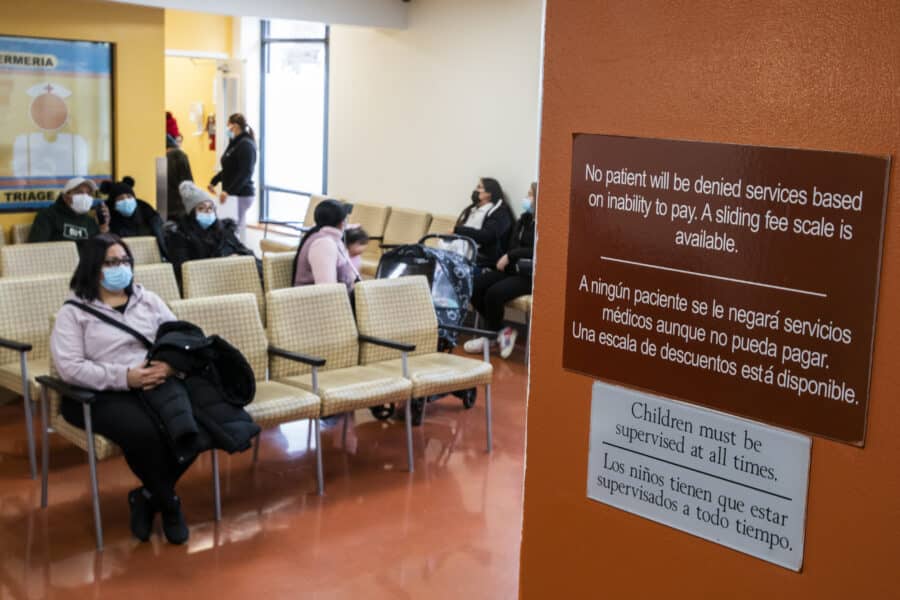
When Language Becomes a Barrier to Health Care






